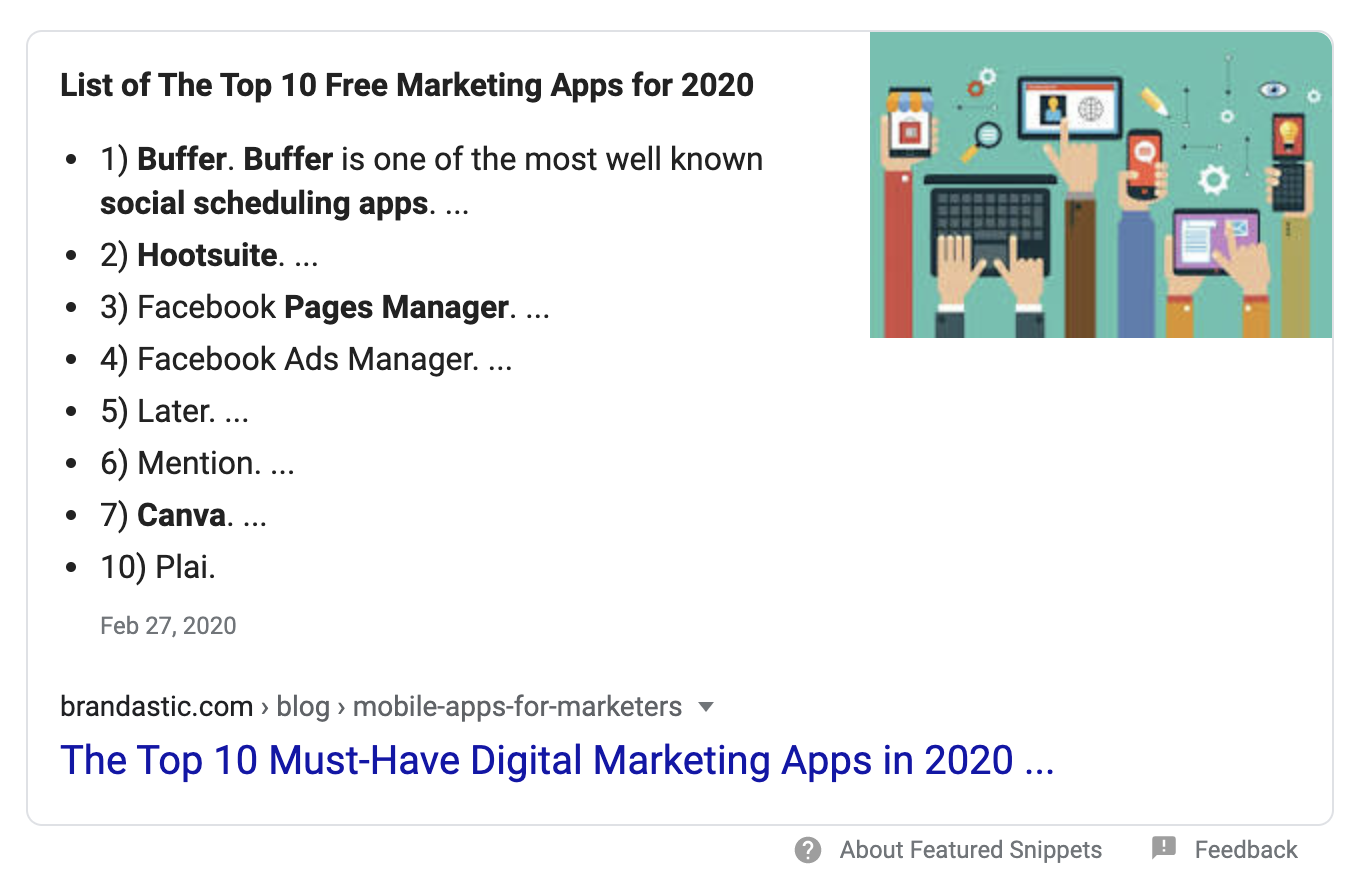For over 86 percent of people on earth, Google is the first place they go for every single question they have.
The popularity of Google isn’t an accident. For over 20 years, they have continued to innovate and to add additional features to their search results.
In 2014, a new era of more accessible search results began with Featured Snippets. Rather than require a searcher to have to click on a link to get an answer, Featured Snippets creates a special block of text above the organic search results.
Google shows featured snippets for approximately 12.9% of all search results. Usually, these snippets will answer questions starting with who, what, where, when, why, and how.
If you can get your content featured in a snippet, it can dramatically boost traffic volume to your website.

Quick Answers and Featured Snippets
Google started offering this feature around 2013 with something called Quick Answers. It took a few years before people started understanding why they were useful.
Google began sourcing answers to questions directly from web pages and posting them into Google results. This change meant that for the users, there was less need to visit the actual website. But of course, it grew organic traffic dramatically because people clicked on the Quick Answer to learn more.
The term Featured Snippet became official in 2016, and the rules became a little more clear: only results that were featured in the first 10 SERPs were used as Featured Snippets. Meaning that if you weren’t featured on the first page results, you couldn’t have a chance at getting a featured snippet.
In 2017, Google began giving users the option to provide feedback on the featured snippets so users could vote on each one’s value.
Here are three tips to increase the chances that your website will get a featured snippet on Google.

1) Begin With Questions
First, you have to think about the questions your customers and website visitors will ask. How can you be helpful by answering those questions for them? Take a look over your FAQ page and decide which of the items are most common and relevant to your audience. Stick to the format of using questions that start with who, what, where, when, why, and how.
Next, compare the questions against the current SERP results. Is there already another snippet answer the question? Can you improve upon it by adding more information? If so, it might be a worthwhile exercise to write about, and answer this question.
2) Get Detailed
The second step is to be more specific with your answers. Remember that people think with detailed explanations in mind, not general responses. Like choosing keywords for your website, you have to consider the specific details of the questions people ask, and how they are phrased.
Granular content will always get more attention in the search engines because it offers more information and detail. People want to spend more time on sites that go into detail and take the time to answer their questions correctly.
The more detail you share, the better chance you have of finding a new featured snippet opportunity.
3) Format Correctly
Once you know the questions you want to answer, the final step is to format the answers, so they have a higher chance of becoming featured snippets.
First, make sure you answer the question with an introductory sentence or two. From there, you can dive into deeper supporting content. Remember that the featured snippet text will be between 54-58 words, so make your answer fit this format.
Second, headings and alt-tagged images to support your answer so that Google can read the metadata and knows what you are looking at.
The better you can show Google that you have valuable information that answers the question, the more likely it can grab the featured snippet spot.
If you take the time to be useful with your featured snippets, you will find that they are more likely to start appearing at the top of the search results. As voice search becomes more prevalent, having immediate answers for your customers and prospects is becoming a vital part of succeeding in the digital marketing space.














